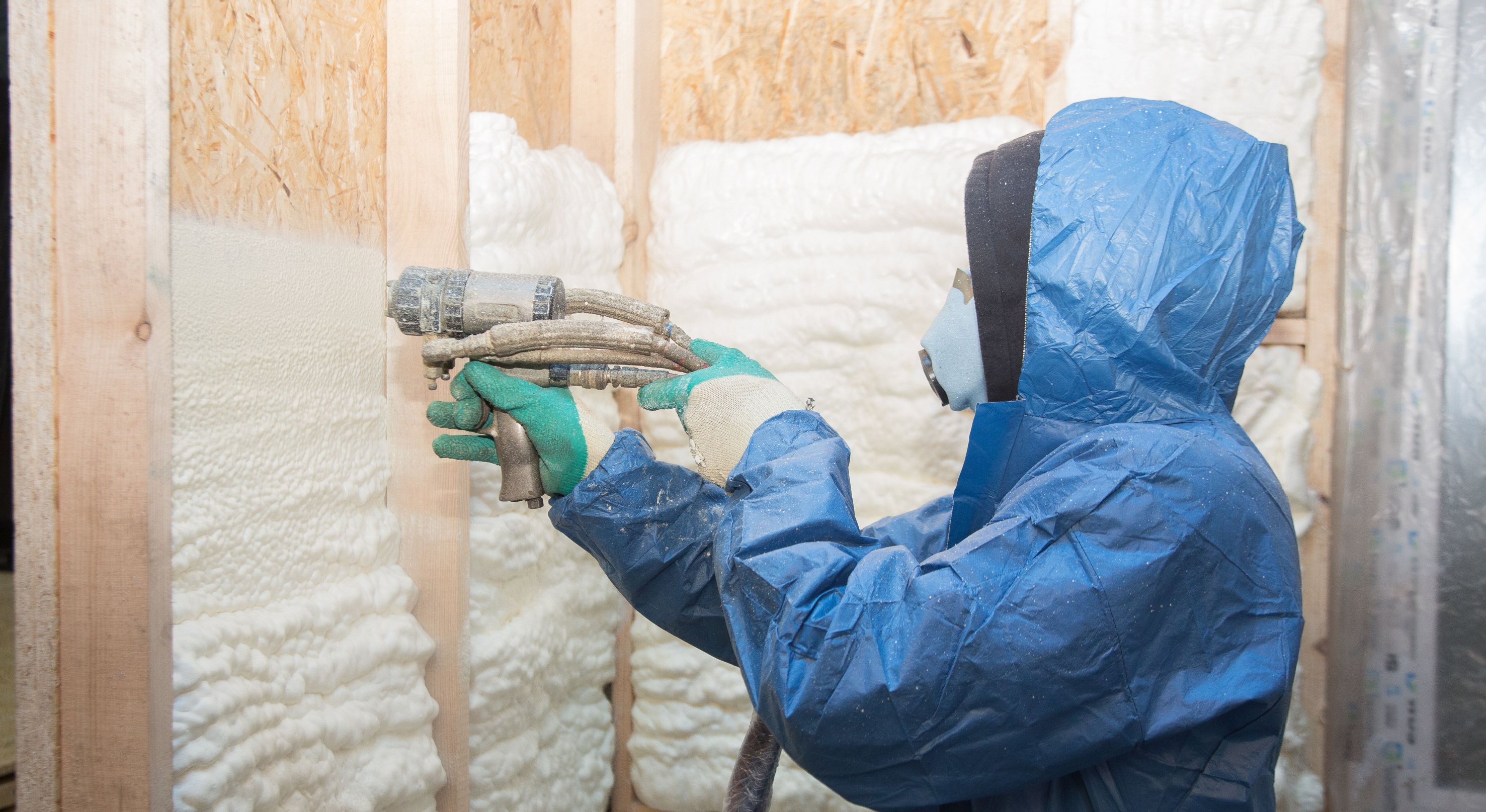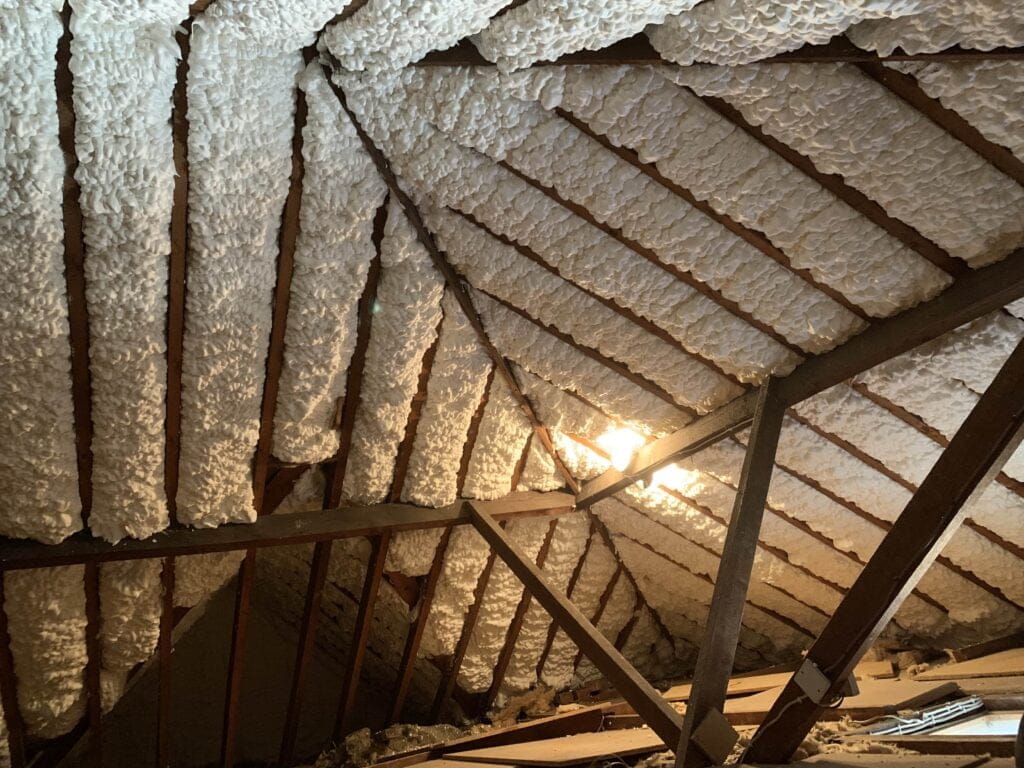The Environmental Impact of Spray Foam: Sustainability Factors To Consider
The Environmental Impact of Spray Foam: Sustainability Factors To Consider
Blog Article
Spray Foam: The Ultimate Remedy for Air Sealing and Insulation
Spray foam insulation has actually emerged as a leading option for reliable air securing and thermal insulation, providing an unique combination of properties that establish it apart from conventional approaches. Comprehending the complete range of its benefits, installment processes, and comparisons with various other insulation types is crucial for making notified choices.
What Is Spray Foam?
Spray foam is a functional insulation material that integrates the concepts of air sealing and thermal resistance to improve power efficiency in buildings. Made up mostly of polyurethane or various other comparable substances, spray foam is applied as a liquid that expands upon contact with surfaces, creating a solid, constant layer of insulation. This distinct residential property permits it to fill spaces, cracks, and spaces that conventional insulation materials might forget, giving a premium air seal.
There are two primary kinds of spray foam: open-cell and closed-cell. Open-cell spray foam is lighter and much more versatile, providing superb audio absorption and a reduced R-value per inch - Spray Foam. On the other hand, closed-cell spray foam is denser, supplying a higher R-value, moisture resistance, and included architectural honesty to constructing elements
The application procedure commonly entails specialized tools, making certain a smooth application that abides by numerous substratums, consisting of concrete, wood, and metal. This versatility makes spray foam suitable for both brand-new buildings and retrofitting existing structures. Its capacity to produce an airtight barrier substantially adds to lowering power usage and improving indoor air top quality, therefore making it a favored option amongst contractors and home owners alike.
Advantages of Spray Foam Insulation
Among one of the most considerable benefits of spray foam insulation is its extraordinary capacity to develop a continuous air barrier, which efficiently minimizes power loss. Unlike conventional insulation products, spray foam broadens to load gaps and fractures, making certain that air leakage is dramatically lowered. This characteristic not only enhances power efficiency but additionally brings about decrease energy expenses in time.
Furthermore, spray foam insulation gives premium thermal resistance, contributing to an extra stable interior setting. Its high R-value per inch enables effective insulation in restricted rooms, making it optimal for attics, wall surfaces, and crawl areas. The moisture-resistant buildings of spray foam aid avoid mold and mildew growth, promoting healthier living problems.
An additional vital advantage of spray foam insulation is its sound-dampening qualities (Spray Foam). It efficiently lowers sound transmission between rooms, producing a quieter and extra comfy home setting. The resilience of spray foam additionally sticks out, as it does not droop or settle over time, preserving its efficiency throughout its life expectancy
Just How Spray Foam Works
Understanding exactly how spray foam insulation functions is vital for valuing its efficiency in air securing and thermal resistance. Spray foam insulation contains 2 primary components: isocyanate and polyol resin. When these parts are combined, they go through a chain reaction that triggers the product to increase rapidly, developing a thick foam that fills cracks, gaps, and tooth cavities.
As the foam expands, it sticks to his comment is here surface areas, developing a closed seal that substantially reduces air infiltration. This characteristic makes spray foam insulation very effective at preventing drafts and dampness infiltration, which can result in energy loss and damages gradually. Furthermore, the closed-cell variant of spray foam uses premium thermal resistance due to its inflexible framework, successfully decreasing warm transfer.
The special homes of spray foam allow it to adhere to uneven surfaces, making sure comprehensive insurance coverage and a smooth barrier. Therefore, spray foam insulation not just boosts power performance yet additionally adds to improved interior air quality by lowering the buildup of allergens and pollutants. Eventually, recognizing the mechanics behind spray foam emphasizes its function as an exceptional option for insulation and air sealing in both domestic and commercial applications.
Installment Refine Introduction

Before installment, the room should be adequately cleaned and prepped, making certain that surface areas are totally free from particles, dampness, and dust. This action is essential due to the fact that impurities can jeopardize bond and general performance. Once the area is prepared, the application includes mixing the 2 parts of the spray foam, which increases upon get in touch with and loads spaces properly.
Trained specialists should conduct the setup, utilizing customized tools to make sure consistent insurance coverage and ideal density. Safety precautions, including putting on safety gear and guaranteeing correct air flow, are necessary throughout this process. After application, the foam typically remedies quickly, forming a strong barrier that improves power efficiency.
Comparing Spray Foam to Traditional Insulation
When assessing insulation options, spray foam insulation stands out in comparison to standard materials such as fiberglass and cellulose. Unlike fiberglass and cellulose, which can allow air seepage, spray foam increases upon application, loading gaps and holes to produce an impermeable seal.
In addition, spray go to my blog foam provides a greater R-value per inch than typical insulation kinds, offering even more effective thermal resistance in a thinner account. This characteristic is specifically valuable precede with restricted tooth cavity depth. Additionally, spray foam is immune to dampness and mold and mildew growth, which can be a substantial interest in cellulose and fiberglass, specifically in humid atmospheres.
Nonetheless, spray foam insulation typically brings a higher ahead of time cost than its standard counterparts. Homeowners have to weigh this preliminary financial investment against long-lasting energy financial savings and efficiency benefits. Eventually, while both insulation kinds offer their objective, spray foam emerges as an advanced remedy for contemporary insulation requirements, especially in terms of air securing and thermal effectiveness.

Final Thought
In recap, spray foam insulation represents an extremely efficient solution for accomplishing ideal air securing and thermal resistance. Its unique buildings, including wetness resistance and audio dampening, make it suitable for different applications in both brand-new building and constructions and retrofitting projects (Spray Foam). Although the preliminary prices may be higher compared to typical insulation materials, the long-term benefits, such as considerable power financial savings and improved indoor air high quality, validate the investment and underscore its value in modern building practices.
Spray foam insulation has emerged as a leading solution for reliable air securing and thermal insulation, using a special mix of residential properties that establish it apart from conventional methods.Spray foam is a versatile insulation product that incorporates the principles of air securing and thermal resistance to improve energy efficiency in structures.When examining insulation choices, spray foam insulation stands out in comparison More hints to typical materials such as fiberglass and cellulose. Ultimately, while both insulation types serve their objective, spray foam emerges as a more innovative service for modern insulation demands, especially in terms of air securing and thermal effectiveness.
In summary, spray foam insulation stands for a highly reliable service for achieving ideal air sealing and thermal resistance.
Report this page